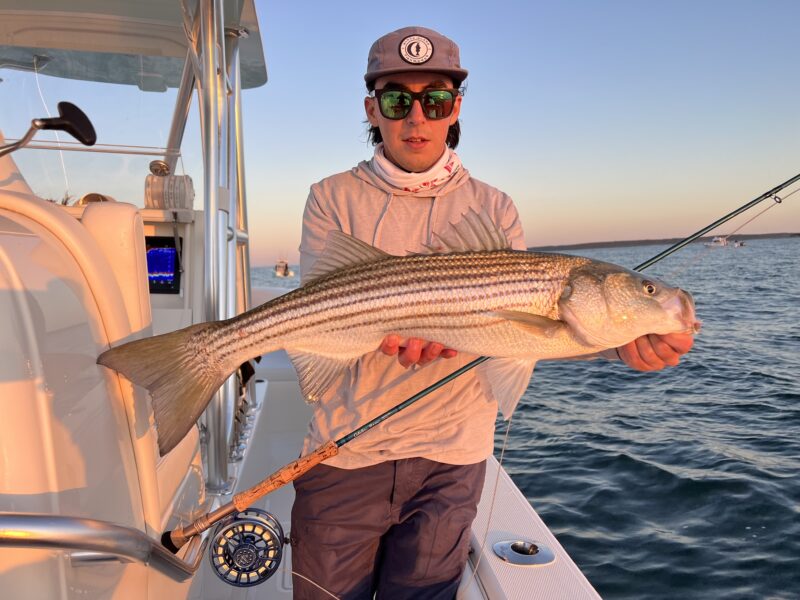

Hurricane Ian was a real drag for Florida, but his remnants definitely sparked the striped bass migration.
Since the storm, big numbers of stripers have been on the move along Long Island’s ocean beaches and inlets. Some spectacular fishing broke open during the height of the storm — which was really just a good nor’easter here — in Shinnecock and Moriches inlets, with some solid 30- and 40-pound fish being caught.
Those fish moved on quickly, and it’s clear that a very large body of large stripers already has passed us by here on the South Fork. But there are also still plenty to come.
There have been quite a few nice fish roaming the suds in the last 10 days or so. The fishing hasn’t been gangbusters, but those in the right place on the right tides have stuck some good ones.
The Montauk rips are still stacked with good-sized stripers, and the shorelines of Rhode Island and Connecticut are seeing huge blitzes of fish daily. Hopefully, those fish are fixin’ to make their way around Montauk and down our shores as the waters cool, and not go up the sound.
There are plenty of reasons to hope that the fall run is really just starting.
Tuna fishing is still pretty good, too, for those ready to either run for the horizon or tussle with size XL bluefins. Bluefin tuna fishing appears to have fully made the transition back to the heydays of the 1980s, when giant bluefin tuna roamed the waters off Long Island.
There has been about as reliable a shot at catching the big tunas as there ever has been in the past month, either up off Point Judith (more on that in a minute) or in the Butterfish Hole.
It’s a testament to what sound fishery management can do — or, actually, what Mother Nature can do when sound fishery management gives her an opportunity to work her magic.
As written about here before, the fish are not the valuable targets they once were. In fact, they are essentially worthless in the grand scheme of things. A nice one sold at the dock — they’re pretty much all sold, cuz who brings home a 600-pound fish for dinner? — might pay for the gas for a trip or two but not much else in most cases. A fish that was once worth $10,000 or more in the early 1990s might only be worth less than $1,000 now.
So now giants are really just a game fish, targeted for the sport of tangling with one of the biggest, most powerful, most tackle-testing species in the sea.
That is, perhaps, as it should be.
First of all, the reason for this is not really a negative. Bluefin stocks have rebounded all over the globe, and the Japanese market that always drove the high prices has found other sources beyond having to fly tuna caught 10,000 miles away to their markets — which just sounds absurd when you think about it.
But, also, it makes fishing for them much more civilized. When the fish were worth tens of thousands, it made for an ugly world where rules were flouted and fishermen in fleets of hundreds of boats were pitted against one another, with money lust dripping from their snarled lips. Now, it’s mostly just guys out looking to test their fishing skills.
As I’ve said before, the economic value of bluefins now is as a driver of the sales of tackle, boats, gasoline and all the other accoutrements of the fishing world, not the sale of their flesh alone.
We need to keep close watch on how we manage the fishery, however. It seems as though there are already fewer of the little bluefins, the 10-pounders that we used to see in huge schools frothing the surface in the spring. There are good numbers of mid-sized fish, so the giant fishing is not going to get worse anytime soon, but we should be looking far down the road with everything we do in fishery management.
In the meantime, catch ’em up. See you out there.
 More Posts from Michael Wright
More Posts from Michael Wright